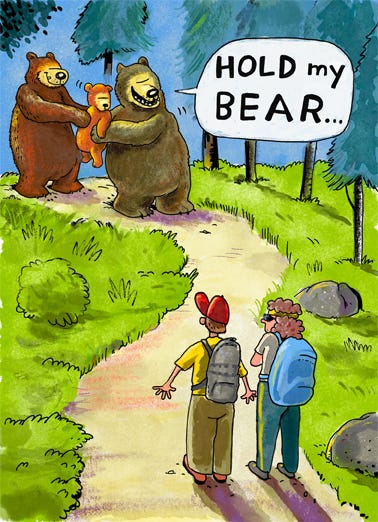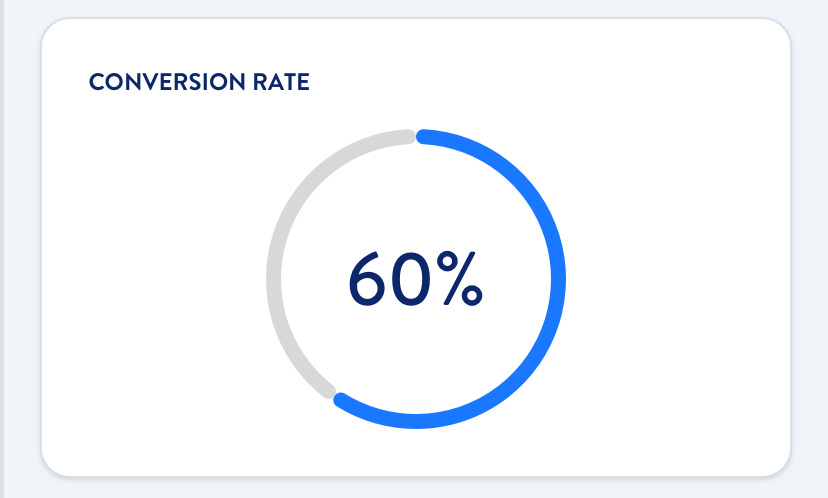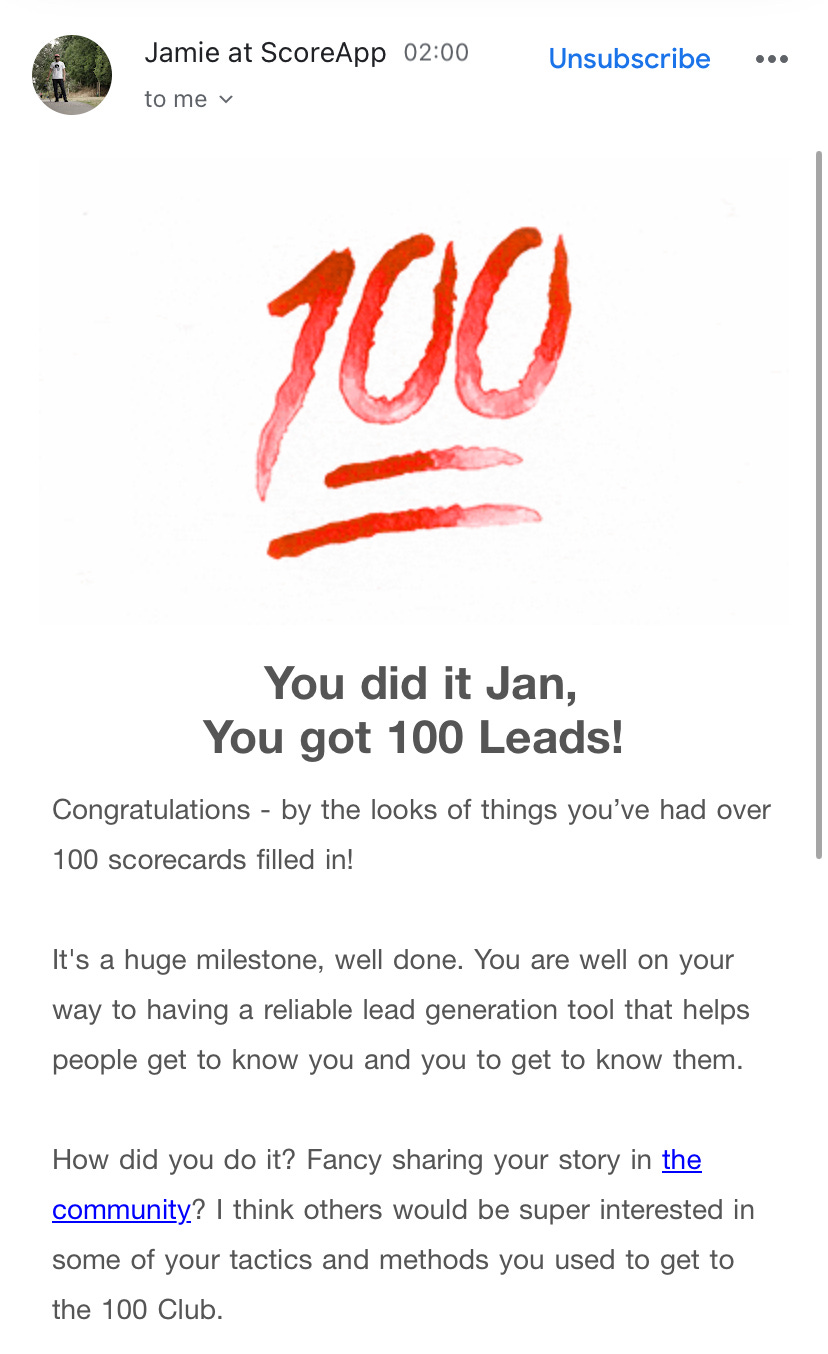The Curious Mind's Advantage: How my ADHD-Powered Side Quest Created a 70% Conversion Tool
...as I followed my intellectual excitement and broke product-building rules along the way
It seems by accident, I have built something that resonates with hundreds of people.
It took me 3 days of work, cost exactly $0 to promote, and led to a 60-70% conversion rate. In the first 24 hours after a humble launch, over 150+ people have given it a try.
It’s already having more impact than I have ever hoped for. And I also broke some rules on the way.
I’ll share key takeaways you can replicate. But let’s start from the beginning. Since beginnings are such delicate times 💚.
It all started with this 39 second video (watch it).
I sent it to my friend — Michael. Michael quickly replied that he didn’t believe Bitcoin was money. Since I respect his opinions BUT hold some strong opinions of my own about the matter – I decided to pursue the topic deeper.
Here’s the tl;dr version of our conversation:
Michael: BTC is an investment. It’s not money.
Jan: Why is it not money?
Michael: Because it has an inherently limited supply. And it’s not generally accepted as payment.
Jan: I get what you are saying, but I’m not fully convinced you are totally right either. I need to resolve this tension. Hold my bear.

That conversation has put me on a side track to better understand WTF is money anyways. I knew that ADHD minds have this tendency to go on side-quests. And I decided to embrace it fully.
Armed with a simple research question: What is money? I eagerly jumped into my trusted Perplexity’s Deep Research flow!
Why am I sharing all this?
Because context matters. What I have learned about money, somehow led me to the creation of the product I will describe to you in a second. But first things first.
I’ve learned that money is not just a currency.
It’s a system. A system of value exchange. And it has evolved significantly throughout human history – from seashells to silver, from silver to shekels, from shekels to Swiss franc, etc.
Most interestingly – money, in its most basic form, is any item or verifiable record (i.e. checks!) that is generally accepted as payment for goods and services. What does it mean in simple terms?
Well, my most striking conclusion was that:
What money essentially is could be different for different people!
This newly discovered relativity of money spun my head even more. How could we possibly have conversations about this topic if it’s so subjective? Head spinning, I needed some anchor.
Remember my friend Michael? My key motivation was to be able to talk to him (or anyone in that regard) about money, investing, and the economy in a way that ensures we are not talking past each other. Even if our differences are indeed irreconcilable – I wanted to be sure that I have at least done my homework in trying my best to understand his position. And mine position as well.
And then – an idea popped into my head! 💡
What if there was a system that could quickly identify a person's views on money?
But wait! Not only identify the views, but also encapsulate them in a form which is not only aligned with established economy schools, but also transparent, and fun. I wished I could somehow quantify Michael’s point of view, and make it more tangible.
That’s how the Currency Compass idea has been born 🙏
The Currency Compass
This idea emerged from my own struggles to navigate these various approaches to money and the conversations around them. I needed a map to make sense of this complex territory, both for myself and for others like Michael who might see things differently.
So I created a simple quiz that organizes different philosophies and perspectives on currency. When you take it, you'll discover which money philosophy resonates most with your thinking, and how to better articulate your position. You'll also learn how to deepen your understanding of opposing viewpoints or find common ground with someone who sees money differently. Think of it as preparation for more meaningful debates about what money truly is.
The building process
My Learner Stack for creating this was standard & simple: Perplexity Deep Research for gathering insights on economic schools of thought, Claude Artifacts for crafting nuanced personality profiles, Scorecard App for building the interactive assessment, and Figma for designing the visual elements.
This combination allowed me to move quickly while maintaining depth and quality – the perfect setup for a curious mind diving into a complex topic.
The tool would not see the light of day if I hadn’t made the building process itself fun and interesting. Let me slow down and explain what I mean.
ADHD individuals tend to quickly lose interest. However, I have found a hack that enabled me to remain engaged for a long enough time to finish the project. The key was making sure I could move fast and accomplish as much as I could in these powerful but short bursts of hyperfocused attention.
Two systems helped me to move fast – the Style System and Claude+Perplexity co-pilot. The Style System enabled me to quickly create the visual assets for the quiz. Perplexity Deep Research and Claude’s co-pilot helped me to devise the quiz and personalities. In that way, I could just kick back and enjoy the research & design process.
Essentially I have stripped most of the boring stuff off the process through automation, and let that void be filled with activities that I find most stimulating – Research and Design. I made sure it was fun.
The promotion & results
I call my launch humble because I initially gathered the courage to post links to Currency Compass tool on only a handful of Reddit boards – r/Bitcoin, r/Economics, r/Cypherpunks, and r/AustrianEconomics. Wanted to test the waters, before diving deep.
The results exceeded all my expectations.
Even with my limited promotion window (just 4 hours before most of my posts were removed due to insufficient karma – a classic Reddit initiation 😆), the response was extraordinary. Both in number of visitors and conversion.
ScoreApp (the app I used to host he assessment) defines conversion rate as the percentage calculated based on the number of visitors to a landing page against the number of respondents who press start to take the scorecard. The tool I’ve created resonated deeply – hitting a 71% conversion rate at its peak before stabilizing around 60%.
But there’s more — These numbers would not happen if I haven’t broken some of the cardinal rules of product building.
Initially, I intended to collect email addresses from folks before they start the quiz. But I quickly noticed that not only is it killing the conversion, it’s also killing the privacy-conscious vibes which are important for a significant group of potential quiz users (the cypherpunks). I removed the email requirement and, unsurprisingly, the conversion skyrocketed!
The influx of quiz-takers was so substantial that I needed to upgrade my Scoreapp plan to accommodate everyone.
I even received a congratulatory message from Scoreapp assuming all these people were leads for my business. The irony wasn't lost on me – I wasn't collecting any personal information from users (intentionally), so they weren't leads in the traditional sense. They were curious minds, just like me, exploring their relationship with money.
The success factors
I’ll switch gears now and condense the learnings and takeaways from building Currency Compass.
The success factors are myriad. I believe that what happened can be compared to a symphony played by the following instruments: openness, curiosity, the learner mindset, and making the right decisions. Everything happened somewhat serendipitously, just at the right time.
To be more concrete, I will now list some factors that contributed to the success. Heads up! It’s not gonna be your classic “do this to succeed”. No, I honestly have no idea why things worked out the way they did. And it’s foolish to create any prescription. The world is too complex.
What I can know for sure, is that if I hadn't sent Michael the link to that YouTube short – there would be no conversation about what is money.
No curiosity would be sparked.
No research done.
No tool created.
No value delivered.
And no story to share.
Let’s use a backtracking algorithm to see what had to happen to enable the story to unfold in the way it did.
Connection Factors
Social Network
Friendship: Would not happen if I had no friends 😆 Value your friends 🙏
Attentive Friend Who Challenges: This would not have happened if my friend just ignored the video instead of responding with a challenging perspective
Tools & Resources
Style System: This would not have happened if I hadn't had access to a personal design system which speeds up the process
Mindset Factors
Curiosity & Learning
Curiosity: This would not have happened if I hadn't been curious myself and wanted to convince Michael that Bitcoin is a form of money 😆
Learner Mindset: This would not have happened if I hadn't put time and effort into learning about different economic schools and blockchain technology (in the past)
Sensitivity: This would not have happened if I hadn’t noticed the innate tension between the two perspectives inside of me
Growth & Adaptation
Tamed Perfectionism: This would not have happened if I hadn't believed I could release something of acceptable quality fast. Watch this if you struggle with perfectionism
Experimentation Mindset: This would not have happened if I hadn't used Perplexity + Claude combo extensively in the past to create other assessments using Scoreapp
Embracing the Pivot: This would not have happened if I hadn’t broken some of the cardinal rules of product building (removing email requirement)
Openness to Feedback: This would not have happened if I hadn't constantly searched for feedback while creating the first iteration of the quiz (started with family and friends)
Process Factors
Creative Workflow
Process: This would not have happened if I hadn't trusted my creative process, which often looks chaotic from the outside but follows its own internal logic. I've learned to respect the seemingly disjointed path my mind takes when exploring a topic – first wide divergence, then unexpected connections, and finally convergence into something cohesive. This process might seem inefficient to others, but it's where my best work emerges.
Making Space for Obsessions: This would not have happened if I hadn't had space to work on the scorecard idea for as long as it required (3 days)
Actively Making it Fun (ADHD tip): This would not have happened if I hadn't made the building process itself fun and interesting through automation and focusing on stimulating activities.
Action & Implementation
Taking Action: This would not have happened if I hadn’t decided to send the YouTube reel to my friend in the first place
Giving a Shot to Promotion: This would not happen if I did not know the basics of how and where to promote it. Reading this helped me change my view on marketing and promotion
Accountability: This would not have happened if I hadn't committed to documenting this journey on my blog
The main takeaway
I'm genuinely moved by the response to Currency Compass.
In just a few days, I built and launched this tool using my Learner Stack approach – blending AI assistance with my own research and design sensibilities.
The quiz helps people discover whether they align more with Austrian economics, Tech Libertarian views, Keynesian principles, or other monetary perspectives. What seems to resonate most with users are the personalized "money personality" descriptions and recommended paths for exploring different viewpoints.
The most satisfying aspect?
No data collection or required email addresses – just pure value delivery in a true cypherpunk spirit.
People are genuinely curious about understanding their economic worldview without strings attached.
Sometimes the projects we create quickly from authentic curiosity deliver the most unexpected impact. This is what happens when we follow our intellectual excitement wherever it leads us 🙏
The future
The journey of Currency Compass is just beginning. Based on the enthusiastic reception, I'm already mapping out what comes next:
I've gathered invaluable feedback for version 2.0 and plan to build a dedicated platform to house the expanding ecosystem of monetary perspective tools. Besides my other learning tools. I also want to dedicate some space within the Learner Mindset Community to host emerging conversations about different money philosophies for the folks who have completed the assessment.
What excites me most about this weekend project are the emerging possibilities – helping individuals kickstart personalized investment plans aligned with their economic worldview, or simply fostering better conversations about money.
The serendipitous creation of this tool has opened doors I hadn't even considered when chatting with Michael about Bitcoin. Sometimes our most valuable contributions emerge not from grand strategic plans, but from following genuine curiosity down unexplored paths. And being humble, and ok with not knowing.
Stay curious!
Jan ✨
Here’s the link to the Currency Compass — give it a shot and let me know what you think!💚. Also, as of the time of writing this article – the tool is free!










